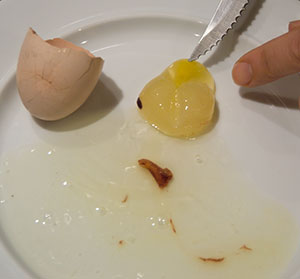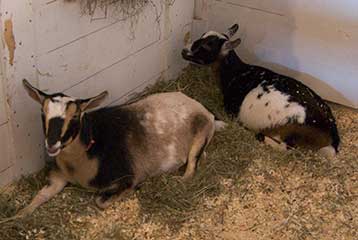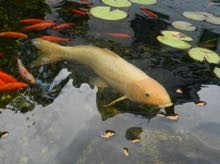Fallen maple leaves blanket my front lawn. The farmers’ market season is almost over, but it seems as if all of the vendors have bushels of apples, and that means it’s PIE SEASON. Around here, we have a number of apple varieties that are perfect for baking, including Cortlands and Baldwins. But, really, any apple will do. All year, I collect recipes from magazines and cookbooks and then I don’t use them. I can’t help myself; there’s really only one way that I like to make an apple pie and I will share it with you here:
I make my pie crust. If you don’t have a favorite recipe, use mine from The Farmstead Egg Cookbook. (If you are truly inexperienced with pie crusts, double my recipe. It’s easier to roll out a crust when you have too much dough, rather than too little.) Or, if crusts intimidate you, buy a frozen one. You can find decent crusts in the freezer of some farm markets or Wholefoods. Just don’t let a fear of pastry keep you from making pie. That said, pie crusts, like bread baking, are all about feel. Practice, don’t worry about perfection, and you’ll get it. Have the bottom pie crust rolled out and in a 9-inch pie shell. Keep it refrigerated while you work on the apples. Preheat the oven to 400 degrees F.
Core, peel and slice about six large apples so that you have about 6 cups. And then maybe a couple of more apples just because. I have one one of those old-fashioned hand-crank corer/peeler/slicer gizmos and I couldn’t get through the season without it. Put the apple slices in a large bowl.
I don’t like my pies very sweet. A perfect pie has just the right balance between the sharp tartness of the apples and the sugar. Get out your sweetener. I’m purposely not being exact here. Sometimes I use plain white sugar -about 1/3 cup. Or a half cup of brown sugar. Or 1/4 cup of white sugar and a splash of maple syrup. If the pie isn’t sweet enough, you can always serve it with ice cream. What’s important in this step is to also get out whatever thickener you’re going to use. I like instant tapioca or tapioca flour- about 2 tablespoons, depending on the moisture content of the apples. Or, use a gel made just for pies. Or, the traditional couple of tablespoons of white flour. I don’t like cornstarch which makes things gummy-gooey. The idea is to hold the pie together and absorb extra liquid without the thickener being obvious in flavor or texture. Toss the thickener with the sugar. If you add the thickener to the apples later it will clod up.
Now, toss the apples and sugar and thickener mixture together. Add something of interest – perhaps minced crystallized ginger, or cinnamon, or dried cranberries, or a handful of walnuts. Or all of them! Or none. Put the apples into the pie shell and mound up in the center an inch or two above the rim. Roll out the top crust and place on top. Crimp the edges together. Slice the top (I do a decorative star pattern) so that steam can escape while the pie is baking. For a pretty crust, brush with milk and then sprinkle on sugar. The raw, pourable brown sugar looks nice, as does white sanding sugar. (Made for cookies – The King Arthur catalog is a great source for these things.)
Place in the oven for 15 minutes, then reduce the temperature to 350. Bake until done, which will be about an hour altogether. You’ll know it’s done when the insides bubble and the crust browns. But, since different pie plates brown the crust at different rates and since ovens are often inexact, and if you were using a frozen pie shell it will take longer… the best way to know when the pie is done is by smell. The aroma of a baked apple pie is simply different than one that isn’t ready yet. And the best way to learn what that wonderful aroma is by experience. So – off you go to bake lots and lots of pies! Enjoy and let me know how your pies turn out.



